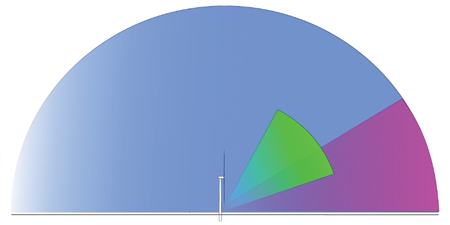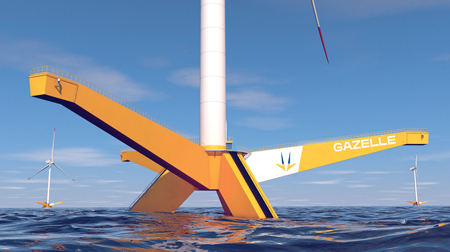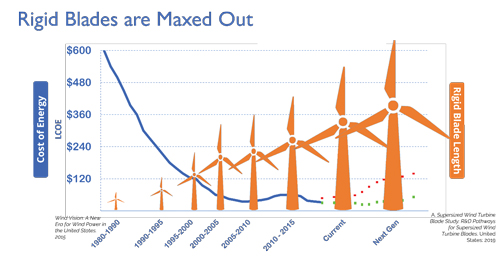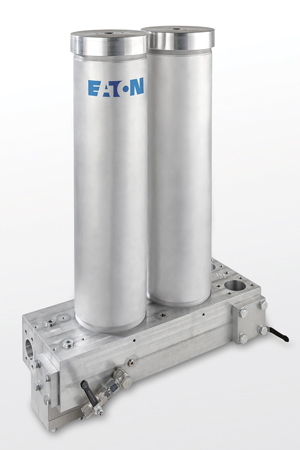- Category: Articles
 Bird Detection and Monitoring Systems
Bird Detection and Monitoring SystemsAs part of efforts to combat climate change, there is rapid growth in renewable energy production around the world. However, bird collisions with wind turbines are likely to be an unfortunate side effect of any effort to ramp up renewable electricity supply.
By Orfanos Vasilis, nvisionist, Greece
- Category: Articles
 Simplifying Design, Construction and Installation
Simplifying Design, Construction and InstallationThe wind industry is rapidly growing and taking steps towards becoming a significant source of power. But, as the discussion around climate change becomes more serious, floating wind companies need to think smarter. We are starting to see many companies propose solutions that take their lead from the offshore oil and gas industry, but this approach has challenges related to material costs, scalability, speed to market, and its overall impact on the environment. As a result, there is not yet a clear technology leader. Alternatively, deep-water wind farms are ideally positioned to become the next frontier for achieving net zero carbon by 2050.
By Jon Salazar, Founder and President, Gazelle Wind Power, Ireland
- Category: Articles
 Enabling Larger Blades by Alleviating Ultimate and Fatigue Loads
Enabling Larger Blades by Alleviating Ultimate and Fatigue LoadsTo increase energy production, wind turbine and blade manufacturers have deployed progressively longer blades for the last 40 years. Blades have grown from, in the 1980s, ones that easily fit in the average suburban driveway, to today’s blades, which are longer than a football field. The impetus behind this growth is increasing energy production while reducing cost. An important metric that OEMs use to compare technological impact and make decisions is the levelised cost of energy (LCOE), an economic assessment of the cost of the energy generating system including all the costs over its lifetime. In other words, LCOE is the minimum price at which energy must be sold for an energy project to break even. Until now, the longer blades have proven successful in lowering LCOE, but diminishing returns indicate a new method is necessary.
By Claudia Maldonado, John Hall, Edward Tierney and James Roetzer, Atrevida Science, USA
- Category: Articles
 Polyurethane solutions for the wind industry
Polyurethane solutions for the wind industryCovestro’s polyurethane solutions offer important cost savings for wind energy, as demonstrated by simulations carried out by Bewind based upon 12MW offshore wind turbines with 100-metre-long rotor blades. Covestro, a global polymer company, has applied its industrial expertise in high-tech polymer materials to develop polyurethane solutions for wind turbine applications which offer performance benefits and lower blade costs.
By Ernesto Silva M., Covestro Deutschland AG, and Dr. Johann Maass, Bewind, Germany
- Category: Articles
 How Customised Filtration Solutions Help Maintain Wind Turbine Gearboxes
How Customised Filtration Solutions Help Maintain Wind Turbine GearboxesAs one of the fastest-growing renewable energy resources globally, wind energy is free, sustainable and inexhaustible. At the same time, manufacturers strive to build bigger, safer, more efficient, and powerful turbines to provide the world with more affordable electricity. However, due to their continuous energy production and often remote locations, both onshore and offshore, gear-driven wind turbines are a very demanding application that requires extreme reliability and durability. For optimal reliability, uptime and service life, the health of the gear oil is critical. Oil contamination can cause gear failure and lead to breakdowns, potentially resulting in high repair costs, lost energy production or even damage to the wind turbine’s structure. Therefore, the continuous monitoring and filtration of gear oil is essential to maximise uptime. This article focuses on the wind turbine’s gearbox and lubrication system and the key aspects to consider when selecting the filtration system.
By Eric Rud, Global Hydraulic Filtration Product Manager, Eaton, USA
- Category: Articles
 How to Plan Your ADLS Project
How to Plan Your ADLS ProjectAircraft Detection Lighting Systems provide reliable, continuous 360-degree radar surveillance of the airspace around wind farms, both onshore and offshore, communications towers, power lines and installations that require aircraft obstruction lighting, automatically issuing signals to activate obstruction lighting when aircraft are detected at a defined outer perimeter.
By Gary Andrews, President & CEO, DeTect, USA and Edward Zakrajsek, Executive Vice President, DeTect Global, UK
- Category: Articles
 Improving the Accuracy of Wind Resource Assessments
Improving the Accuracy of Wind Resource AssessmentsFrictional forces due to land properties (such as terrain height and the physical structure of vegetation (height, density, etc.)) influence the strength and direction of the wind at the surface. Therefore, reliable and timely data and information on such properties is critical to accurately assess the availability of wind resources. However, assessment of wind energy resources is a highly complex and time-consuming process, ultimately relying on consistent, accurate and timely models and input data. Yet, in many cases, especially in forested sites, surface data on roughness and forest height is inaccessible or simply not available, and this may impact the ability of wind modellers to accurately assess wind resources.
By Torsten Bondo, Business Development Manager, DHI, Denmark
Use of cookies
Windtech International wants to make your visit to our website as pleasant as possible. That is why we place cookies on your computer that remember your preferences. With anonymous information about your site use you also help us to improve the website. Of course we will ask for your permission first. Click Accept to use all functions of the Windtech International website.








